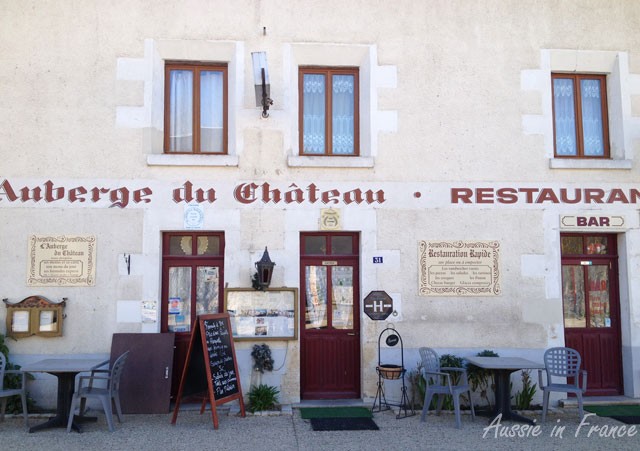The weather is absolutely wonderful not only in the Loire but right across France and most of Europe so we’re back on our bikes after a six-month break. I suggest we find choose a nice flat bike path out in the open as a warm up. It’s 2.30 pm and an unbelievable 19°C which must be practically a record for 8th March.
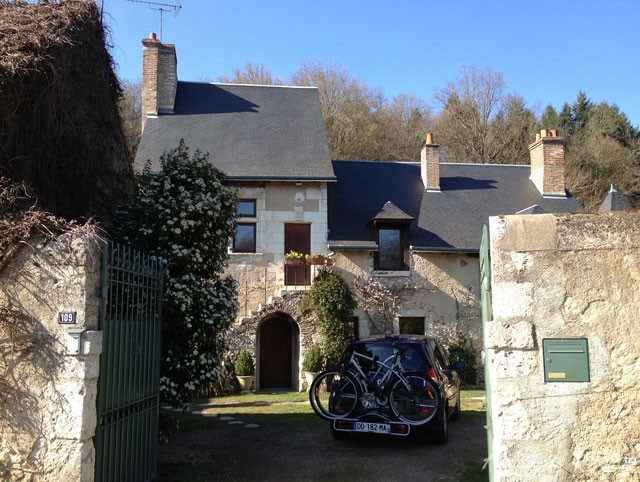
So we pump up the tyres (well, Jean-Michel does), check the paniers and handlebar bags (that’s my job) and put the bikes on the back of the car. We drive to our preferred starting point along the Loire between Blois and Saint Dyé on the Route Historique de la Vallée des Rois, just opposite the turn-off to Saint Claude de Diray.
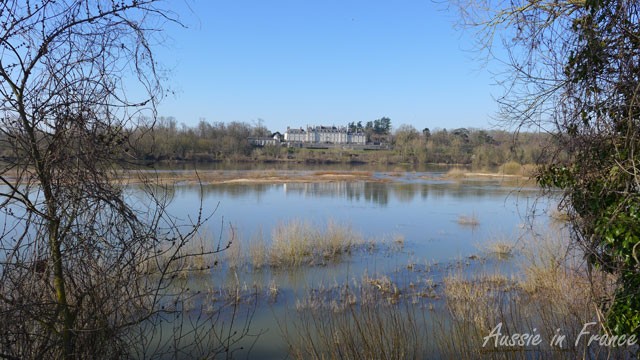
It feels great to be back in the saddle! Château de Menars stands out clearly on the opposite bank and we discover a new sign post opposite Montlivaut showing the flood levels of the Loire. In 1856, it reached 3.4 metres, in 1866, 3.2 metres and in 1846, 2,6 metres.
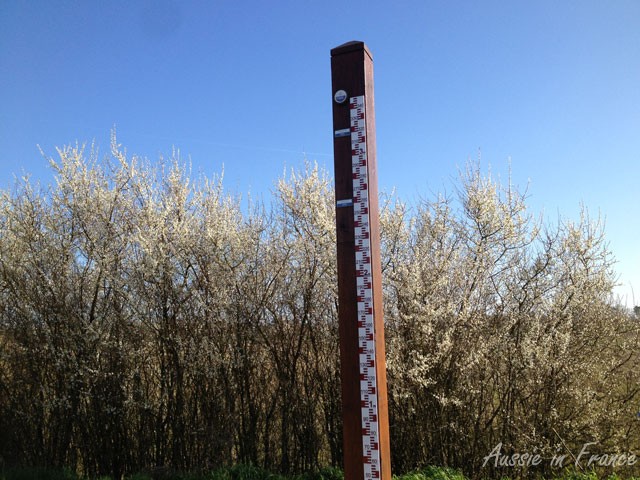
We soon arrive in Saint Dyé where a flock of swans is attracting attention on the river bank. Further on, we see lots of different trees in blossom. On the path towards Muides, we see the most delightful tree house.
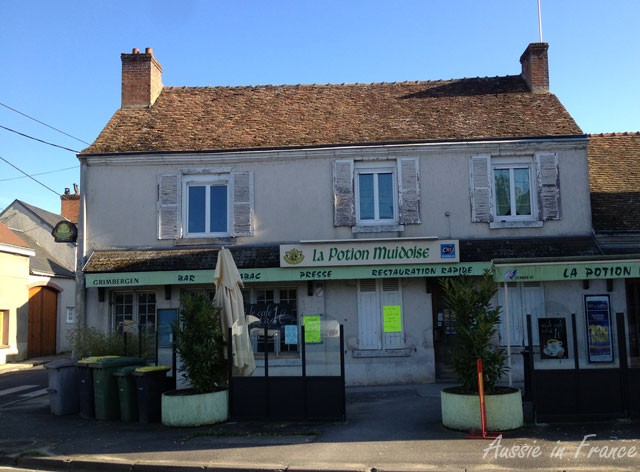
I’ve scheduled a stop at La Potion Muidoise so are somewhat disappointed to discover it’s closed in the afternoon at the moment. I can’t imagine why you’d open a bar in the morning only, particularly on the finest Saturday we’ve had in months. But it’s school holidays, I guess.

We take a new route back to the river and see the most picturesque little well covered in wild flowers. I can’t wait to see it in the summer when the hydragea is in bloom.
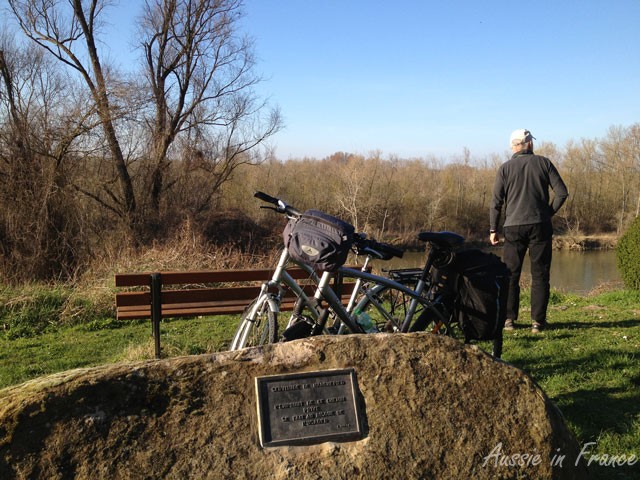
We eat our biscuits on a bench overlooking the Loire. Next time I’ll have to remember to pack a thermos with tea!
By the time we get back to the car, we have ridden 25 kilometers and I am wishing it hadn‘t been quite so flat!
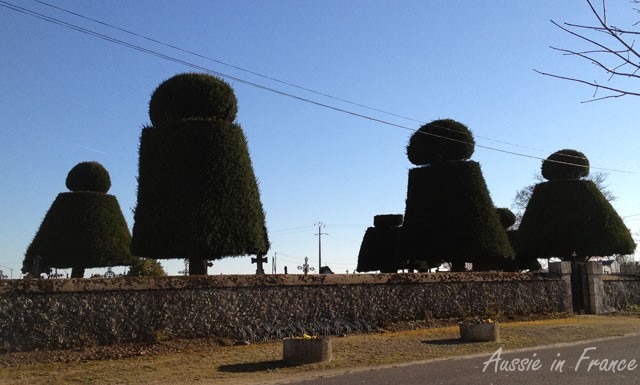
It’s next day and we’re planning another ride. The temperate is expected to reach 21°C. I’ve learnt my lesson and have suggested a few small hills so we head for Monthou-sur-Bièvre with its unusual cemetary. The cycle route has a lot of little villages along the way which should mean plenty of flowering trees and shrubs. I wince with pain as I ease myself into the saddle.
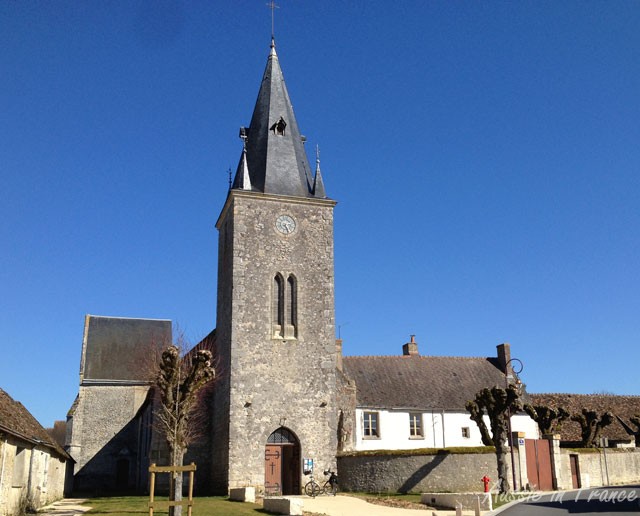
The little church in Ourchamps is open so we go inside and are amused to see a document dated 1882 saying that the chairman of the church council of St Pierre expressly forbids the sexton from letting any one other than the church employees ring the bells. It makes you wonder what had been going on.

As we go past a small wood of pine trees Jean Michel points out “tents” made by the larvae of the pine processionary moth which is an economic pest. The urticating hairs of the caterpillar larvae cause harmful reactions in humans and other mammals (I looked that up!). I’ve never even heard of them before!
This time I have scheduled a stop in the little town of Fougères-sur-Bièvre with its well-preserved 15th century castle and I’m hoping there’s a café open because I have forgotten to replenish the biscuit supply. You guessed – it’s closed for the afternoon, although it was obviously open at lunchtime, and I don’t have the promised thermos of tea either.
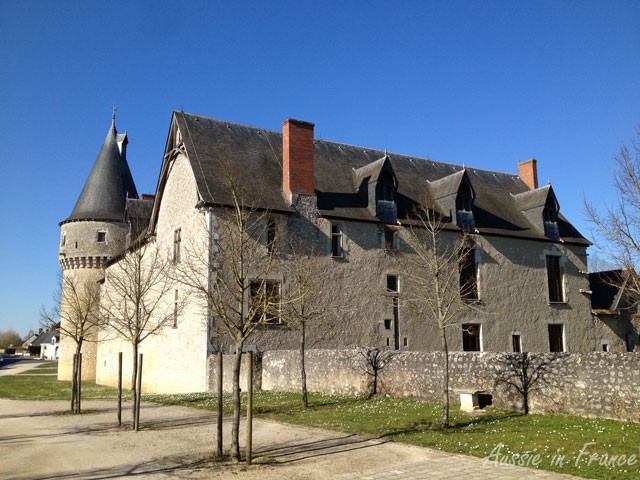
After 30 kilometres, we arrive back at our starting point and I’m rather glad that next day is Monday and the only seat I’ll have to sit in is my ultra-comfortable desk chair! I’m still happy to have had such wonderful weather to cycle in. In a couple of days’ time, I should be ready to get back in the saddle.




